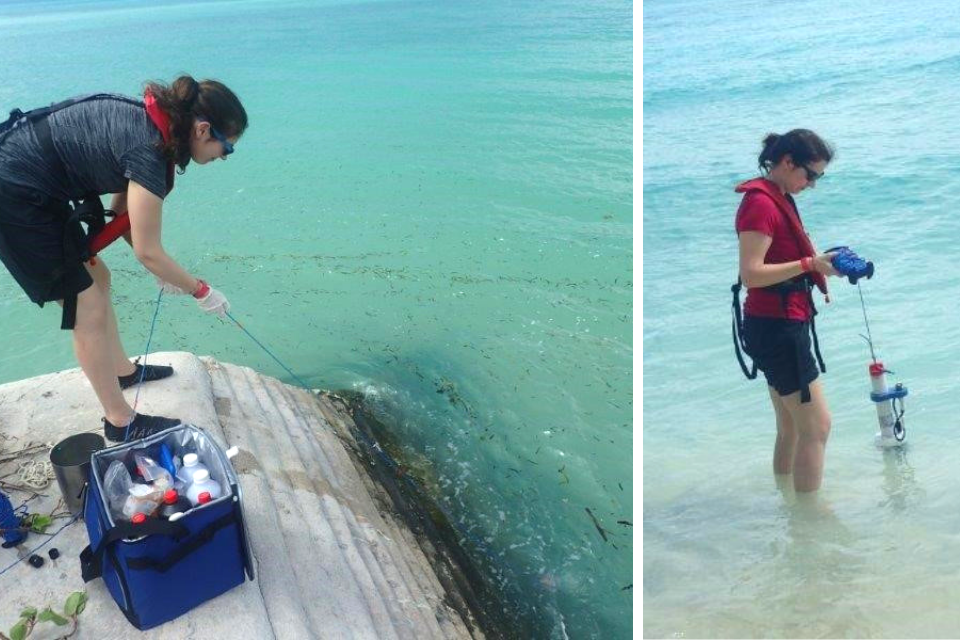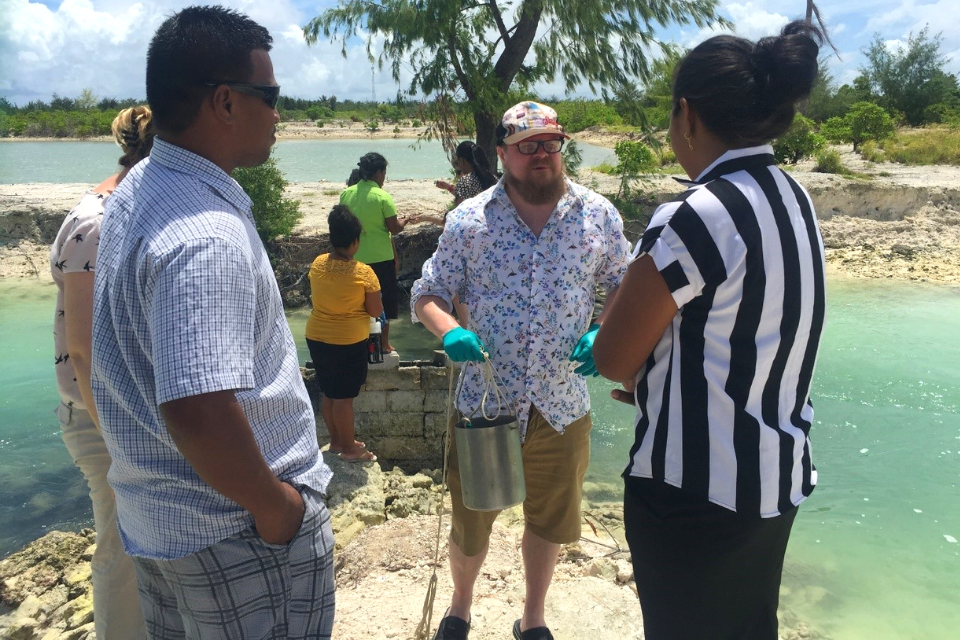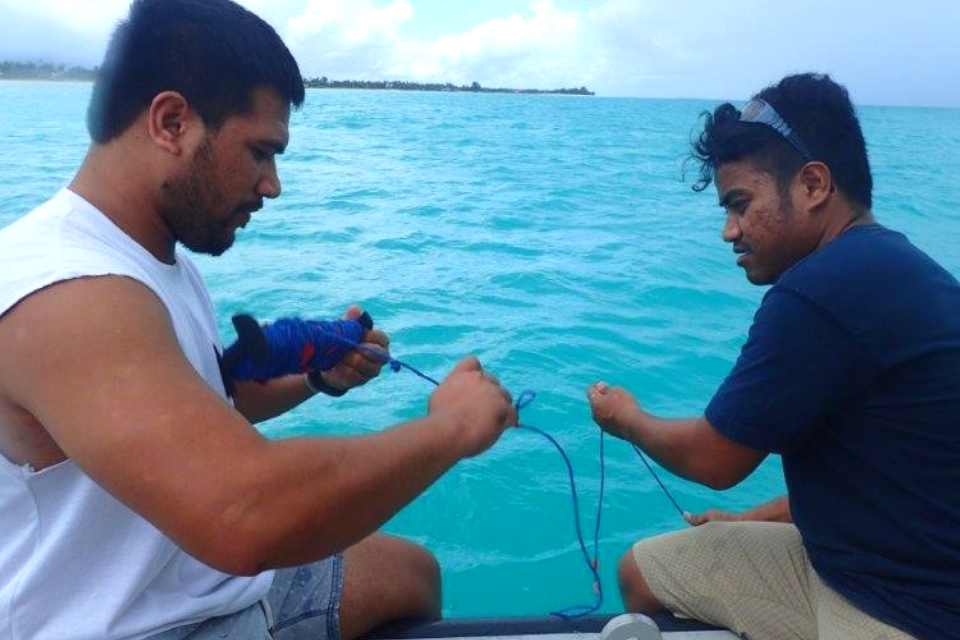
An initial fieldwork, training, and partnership development visit to Kiribati’s capital Tarawa laid the groundwork for a Memorandum of Understanding between Cefas and their Ministry of Environment for ongoing collaboration in water quality monitoring.
Cefas’ work in Kiribati is part of the Commonwealth Marine Economies (CME) Programme. The CME Programme works with the most vulnerable Small Island Developing States to help them make the most of their natural maritime advantages, to enable sustainable economic growth, and to alleviate poverty.
Kiribati is heavily dependent on the marine environment. Negative human impacts on the environment like climate change, coastal pollution, overfishing, and destruction of coastal habitats threaten the long-term availability of marine resources.

Urban South Tarawa has experienced extremely rapid population growth as people relocate from other islands to take advantage of education and employment opportunities.
As a member of the United Nations list of Least Developed Countries, Kiribati has struggled to set up and maintain the infrastructure needed to protect its marine environment from increasing human pressures.

Poor water quality in the lagoon and in the coastal ocean around South Tarawa is harmful to both human and ecosystem health. With the help of the local Environment Ministry, the scientists took a range of measurements of the marine system.
“We measured water chemistry including dissolved oxygen and nutrients, dissolved metal pollution, the amount of microscopic plant life in the water, and microbiological markers of human health. Together, our observations provide the basis for a holistic assessment of local water quality issues” explains Cefas’ Carolyn Graves, Marine Monitoring Scientist.

Local staff were critical to the project’s success. They helped identify important sites to sample, and shared knowledge of previous efforts to monitor and improve Tarawa’s water quality. Cefas provided training in the practical aspects of water quality monitoring in the field, the laboratory, and for managing monitoring data.
During the two-week survey in March 2019 the team found dangerously elevated concentrations of bacterial tracers of sewage and evidence of the negative impacts of excess nutrient inputs known as eutrophication.

Eutrophication can cause excessive growth of marine plants and reduce the availability of dissolved oxygen in lagoon water, which fish and other marine organisms need to breathe.
The water quality varied between sampled locations, and between samples collected at the same location but different times. This information on the spatial and temporal distribution of elevated concentrations of nutrients, contaminants and microbial contamination highlights high risk areas.

People in Tarawa depend heavily on marine resources, so their health and wellbeing is directly linked to that of the wider marine ecosystem. For example, fish and shellfish from the lagoon are key food sources. Protecting human health requires an up to date understanding of when and where the water is safe and when and where it’s not.

“We’re going to use what we learned from our exploratory surveys, alongside existing local knowledge of human pressures, to develop an effective and efficient water quality monitoring programme working in partnership with the Kiribati Government.
"Evidence linking human pressures to negative impacts will also help motivate investment in infrastructure” explains Principal Scientist Michelle Devlin, Cefas’ Science Theme Leader for socio-ecological systems.
The Memorandum of Understanding between Cefas and Kiribati’s Ministry of the Environment will facilitate ongoing collaboration to achieve these goals.
Cefas’ work in Kiribati was part of the UK Commonwealth Marine Economies Programme, Enabling safe and sustainable marine economies across Commonwealth Small Island Developing States (SIDS). Cefas Scientists were joined by collaborators from the UK’s National Oceanography Centre and the University of the South Pacific.
The CME Programme was hosted by the Kiribati Ministry of Lands Environment and Agricultural Development’s Environment and Conservation Division.
Subscribe to the CME Programme newsletter here.